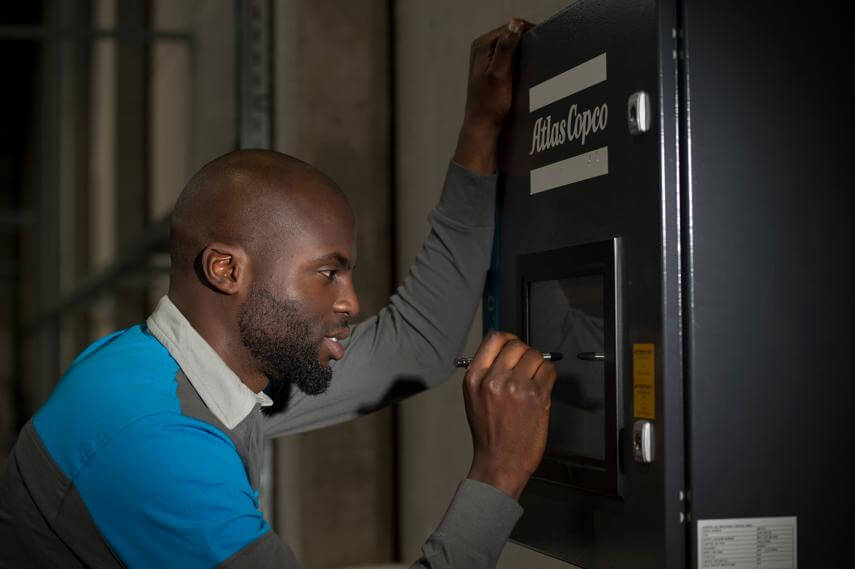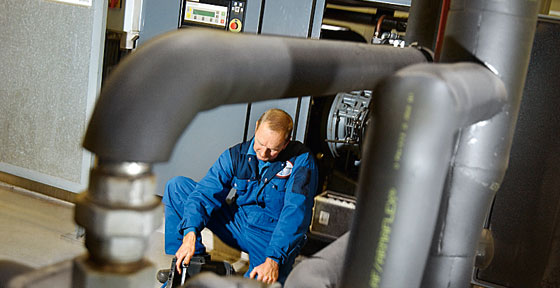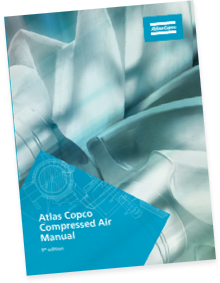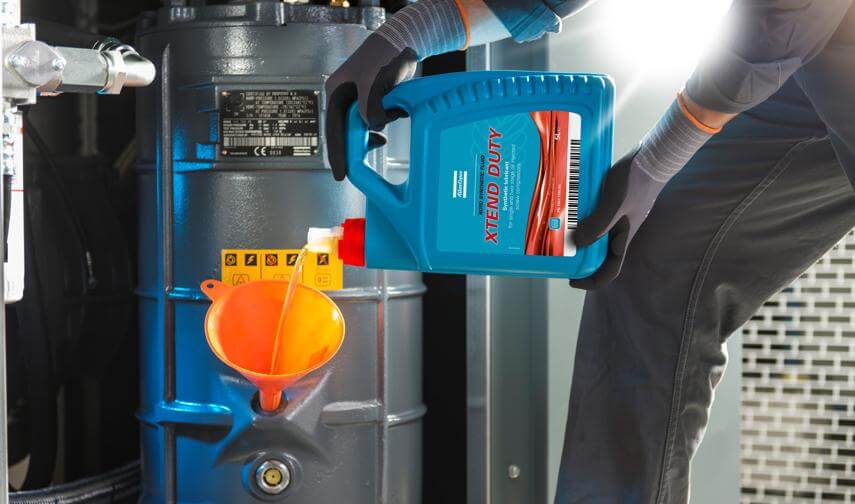There are three types of audits:
1) Basic Audit, also referred to as, “walking the line”
2) Data Logging
3) Full System Audit
Walking the line is the simplest of all procedures and is comprised of a visual inspection of the various components of the compressor system including but not limited to the compressor room, filters, piping and condensate drains.
Cost: A basic audit is often available from compressor manufacturers at no charge.
Benefits: A basic audit can reveal inefficiencies or performance weaknesses within the compressed air system. Areas for improvement are identified, audible leaks are tagged and the final report shows ways to maximize efficiency and boost productivity.
Data logging uses a standard formula (one that includes power factor) to calculate the current (Amps) and involves performance tracking of the compressor system for a minimum of seven days. Data logging also involves walking the line, as well as determining inappropriate uses of compressed air or inefficiencies in compressor room and plant floor layout.
Cost: Data logging does come with a cost, but local utility providers often offer rebates to companies who perform energy audits and reduce their energy usage.
Benefits: Data logging can reveal if the compressor is correctly sized or if it is operating close to its maximum capable CFM output.
A full system audit usually includes a range of in-depth audits on the various parts of the compressor system, including but not limited to air measurement of the compressed air system demand, air leak detection and control and air quality and assessment of water or oil in the air.
Cost: Depending on how in-depth the audit, the price can range up to $20,000.
Benefits: As we’ve covered in previous posts, typical savings range from 30% to 50% when the audit recommendations are put into practice. The benefits of performing an audit, such as lower energy costs and higher production line efficiency, usually pay for the investment.
If you are interested in learning more about audits, contact us.




